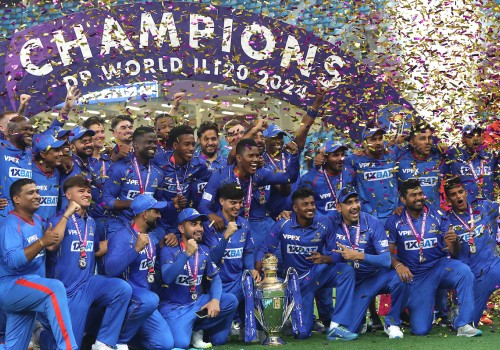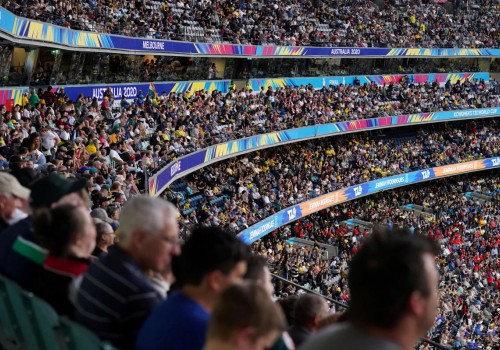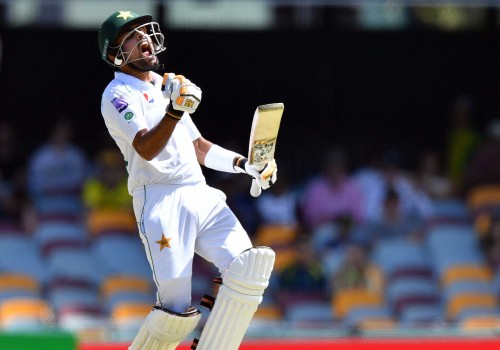New Zealand ICC World Cup build up falters against India
New Zealand’s build-up to the upcoming ICC Cricket World Cup 2019 scheduled to take place in but a few months time in England and Wales has already suffered a setback. Their five-match home ODI series against India is lost after just three games.
The Black Caps failed to bat out their allotment of 50 overs for the third match in succession. Yet it was also the only match of a one-sided contest in which, what was a full-strength New Zealand Team, managed to stay at the crease long enough to apply any pressure on the opposition, having accumulated their first century stand to date. Regardless India soon had them back under the cosh, all the more disturbing for New Zealand players, coaches, selectors and supporters alike, given that at the start of the series they had the best win-loss ratio at home of any team since the last World Cup.
Thus far New Zealand have been struggling to answer questions that rarely arise in present day batting-dominated ODI cricket. Unfortunately, the top order have not delivered the necessary responses. Colin Munro, who attempted to suppress his natural game, ended up throwing his hands at everything that moved; taking little caution from being dropped, he continued to edge into the slip cordon. Then the usually reliable Martin Guptill, began to fall into much the same trap, leaving the team as a whole seemingly incapable of denying India wickets with either of the new balls.
As a consequence, both James Neesham and Todd Astle have returned to the Kiwi fold, and will therefore be available for selection for the fourth and fifth games in the series at Hamilton (31st January) and Wellington (3rd February) respectively.
Neesham will replace fast-bowling allrounder colleague, Doug Bracewell, while Astle comes in as the frontline leg spinner in place of Ish Sodhi.
The NZ squad for second and third ODIs: Kane Williamson (captain), Todd Astle, Trent Boult, Colin de Grandhomme, Lockie Ferguson, Martin Guptill, Matt Henry, Tom Latham (wicketkeeper), Colin Munro, James Neesham, Henry Nicholls, Mitchell Santner, Tim Southee, Ross Taylor
Neesham was involved in the three-ODI series against Sri Lanka which took place in early January before he was struck down by a grade-one hamstring strain. He has since completed his fitness rehabilitation by turning out to play for Wellington in the Super Smash.
Meanwhile, Astle has also been out of action since November last year following a knee injury, and like Neesham, he has made his return to full fitness in the Super Smash, playing four games for Canterbury in January.
New Zealand selector Gavin Larsen has confirmed that the reselection of the experienced Neesham, (he has played in 44 ODIs to date), and the talented Astle, despite only having six games under his belt in the format, were both moves already aligned with the team’s planning in the run-up to the World Cup. Hopefully, they will reinforce the current squad with some much needed momentum.
Larsen confirmed that both Bracewell and Sodhi still very much figured in the Black Caps’ World Cup plans:
“Doug and Ish have been two of the brighter spots of the ODI series so far and we’ve been encouraged by their performances against a quality Indian side.”
However, he went on to say that Neesham and Astle needed top level game time exposure after injury:
“It’s great to welcome back the all-round skills of Jimmy and Todd and we’re looking forward to seeing what they can bring to the series.
“We’re still looking to keep our options open with selections at this stage and ensure we continue to learn as much as we can about our players.”
India have proved the sternest of ODI tests for New Zealand leaving the selectors with much food for thought, despite their relative compatibility with English style pitches.
Nevertheless, the manner of New Zealand’s acquiescence has been unusual regardless of world class India’s outstanding form and ability. New Zealand batsman Ross Taylor accepts that a series defeat after only three ODI’s played is largely down to the immense quality of the opposition. That said the most uncharacteristic aspect was that the Black Caps have not lost three successive games at home since 2013.
Bizarrely earlier in January, they were comfortably in charge, defeating Sri Lanka in all three formats, including a 3-0 whitewash in the ODI series. However, that’s cricket as they say and India at the moment are ‘of another galaxy’.
Taylor acknowledged the competitive difference, as he spoke to media:
“It has been a step-up in opposition, and at the same time, India winning the key moments has put us under pressure.”
“We just weren’t able to capitalise when we were in a semi-dominant position. But credit to India – when they’ve batted, we haven’t been able to get wickets to put them under pressure. And vice-versa with the bat, with them getting early wickets and putting us under pressure,” he continued.
“With bat and ball, we haven’t been able to penetrate. We back ourselves to keep wickets with the bat, which we haven’t been able to. India have put us under pressure for long periods of time and got wickets at crucial times. And if you’re three or four down, with still 25 overs to go, you’re still a long way behind the game.”
Nevertheless, although the series against India is already lost, the residual games carry a weight of belief for New Zealand. Well beyond dead rubbers, these remaining ties expose several points to prove for the Black Caps not least restoring a sense of grit and determination. With just months to go before the World Cup, they also represent crucial ‘live’ opportunities for the team to work out a tactically aware mix as well as trial new personnel.
Naturally the experiments have been ongoing, one of which has been to sideline established players like Tim Southee so key to New Zealand’s success in the previous World Cup.
“The World Cup is not far away, we’ve still got our combinations to sort out,” Ross Taylor continued his analysis.
“I don’t know when the team is coming out. There’s a couple of new personnel coming in. Hopefully, they can bring in a new edge to the team.”
Despite the premature defeat, New Zealand can at least take some comfort from having been able to deal far more effectively with India’s star spin bowling duo, Kuldeep Yadav and Yuzvendra Chahal as the series has progressed. In the last game, the pair only took a combined 2 for 90 in 17 overs. In fact, Kuldeep, New Zealand’s nemesis in the first two games, with four wickets in each, remained without a wicket after 8 overs. It was Taylor himself who led that particular charge, in a scintillating spell with the bat hitting 93 off 106 balls.
“I think you just got to be patient and know they [the spinners] are going to bowl good balls,” Taylor commented.
“You got to take it deep. If you’re losing wickets in those first two or three overs, they go and squeeze the new batsman and then it becomes very tough. You have to acknowledge that they’re going to bowl good balls and that you can catch up later on, with wickets in hand.”
While there are of course some glimmers of progress emerging from the gloom of an already decided series, both the outcome and most specifically levels of performance in final two ODI games against India are fundamentally important to the Black Cats’ World Cup ambitions on every level. The restoration of New Zealand’s collective team confidence, individual self belief and overall momentum are critical to a successful tournament.




